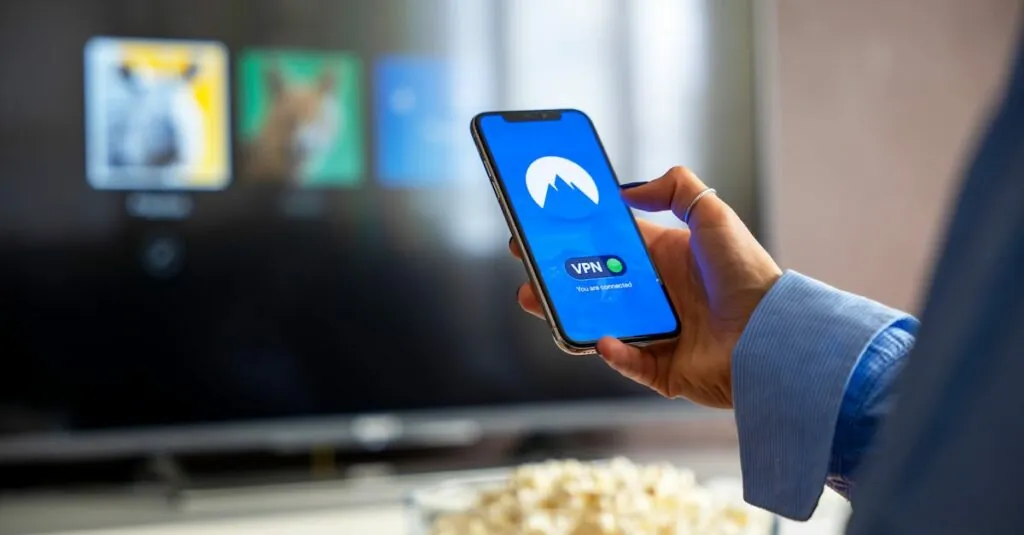Table of Contents
ToggleUnlocking an iPhone can feel like finding the Holy Grail of smartphone freedom. Imagine being able to switch carriers at will, avoiding those pesky contracts, and enjoying the best deals without being tied down. But how can one tell if their beloved device is truly unlocked?
Understanding Unlocked iPhones
An unlocked iPhone allows users to switch between carriers with ease. With this capability, individuals can take advantage of various plans and pricing options from numerous service providers. Knowing whether an iPhone is unlocked is essential for maximizing this freedom.
Check the settings on the device first. Navigate to “Settings,” then “General,” followed by “About.” Look for the “Carrier Lock” section; if it states “No SIM restrictions,” the phone is unlocked.
Examine the SIM card tray next. An unlocked iPhone supports SIM cards from different carriers. Insert a SIM card from another provider to verify compatibility. If the phone connects without issues, it remains unlocked.
Contact the original carrier for confirmation. Most carriers provide information on the status of the device upon request. Simply provide the device’s IMEI number for accurate results.
Procuring information through online checkers proves beneficial. Various websites can determine the lock status using the same IMEI number. Users must ensure these platforms are reputable to avoid inaccurate data.
At times, an iPhone could appear unlocked yet still be linked to a carrier payment plan. Device restrictions may apply, depending on payment completion. Investigate account status to guarantee no lingering obligations exist.
Knowing if an iPhone is unlocked opens doors to better service options. Understanding each method ensures users can determine their device’s status effectively.
Importance of Knowing if Your iPhone is Unlocked
Knowing whether an iPhone is unlocked carries significant advantages for users. It provides the freedom to choose service providers and take advantage of competitive pricing.
Benefits of an Unlocked Phone
Unlocking an iPhone offers several key benefits. Users enjoy the flexibility to switch carriers without restrictions. They can select plans that best suit their needs, often saving money in the process. Travelers also find unlocked devices beneficial, allowing them to use local SIM cards for cheaper data rates abroad. Unlocking the device may lead to better resale values since buyers often prefer unlocked models.
Limitations of a Locked Phone
Locked iPhones come with several disadvantages that may hinder user experience. They limit the ability to use alternative carriers, tying users to specific plans and pricing structures. Often, locked devices remain subject to contract obligations, increasing overall costs. Navigating international travel with a locked phone poses challenges as users cannot use local SIM cards without breaking contracts. Additionally, a locked status can decrease the device’s resale value due to the associated restrictions.
How to Check if Your iPhone is Unlocked
Determining if an iPhone is unlocked involves a few straightforward methods. Users can check various options to confirm the unlock status.
Using Your SIM Card
Try inserting a SIM card from a different carrier. If the iPhone connects to the new network, it’s likely unlocked. Sometimes, you’ll receive a message indicating that the carrier is not supported, which typically signifies a locked device. Keeping a backup of your original SIM card is crucial for easy reinstallation after the test.
Checking Network Settings
Accessing the “Settings” menu plays a significant role in this process. Navigate to “Cellular,” then tap on “Cellular Data Options.” Look for the “Carrier Lock” status. If it displays “No SIM restrictions,” the iPhone is unlocked. Should it indicate otherwise, the device remains locked to its original carrier.
Using Third-Party Websites
Several reputable online services can verify if an iPhone is unlocked. Input the device’s IMEI number on these platforms for instant results. Users should ensure they choose trusted websites to avoid misinformation. Generally, this method provides a quick and reliable confirmation of the unlock status.
What to Do if Your iPhone is Locked
Users often face challenges when their iPhones are locked. First steps involve confirming the lock status and exploring options for unlocking.
Contacting Your Carrier
Contacting the mobile carrier serves as a reliable method to determine an iPhone’s lock status. Detailed records associated with the device’s IMEI number are available through customer support. Users should prepare their IMEI for a quick inquiry. Many carriers provide straightforward instructions on how to unlock devices. Understanding any contractual obligations or fees is crucial during this process. Reaching out directly can clarify whether the iPhone is tied to a specific plan.
Unlocking Your iPhone
Unlocking an iPhone generally requires several steps. Unlock eligibility depends on the carrier’s policies and the device’s payment history. Successful unlock requests often involve meeting specific conditions. Users might need to submit an unlock request through their carrier’s website or customer service. Following carrier instructions carefully ensures a smoother unlocking experience. Once the request is approved, further instructions guide users on how to finalize the unlocking process on their devices.
Knowing whether an iPhone is unlocked is essential for users who want flexibility and cost-effective options. By checking the “Carrier Lock” status in the settings or testing a different SIM card, users can quickly determine their device’s unlock status. It’s also advisable to verify with the original carrier or utilize online checkers for added assurance.
For those with locked devices, understanding the unlocking process and any associated obligations is crucial. An unlocked iPhone not only opens up a world of carrier choices but also enhances its resale value and travel capabilities. Empowering users with this knowledge ensures they can make the best decisions regarding their mobile experience.




